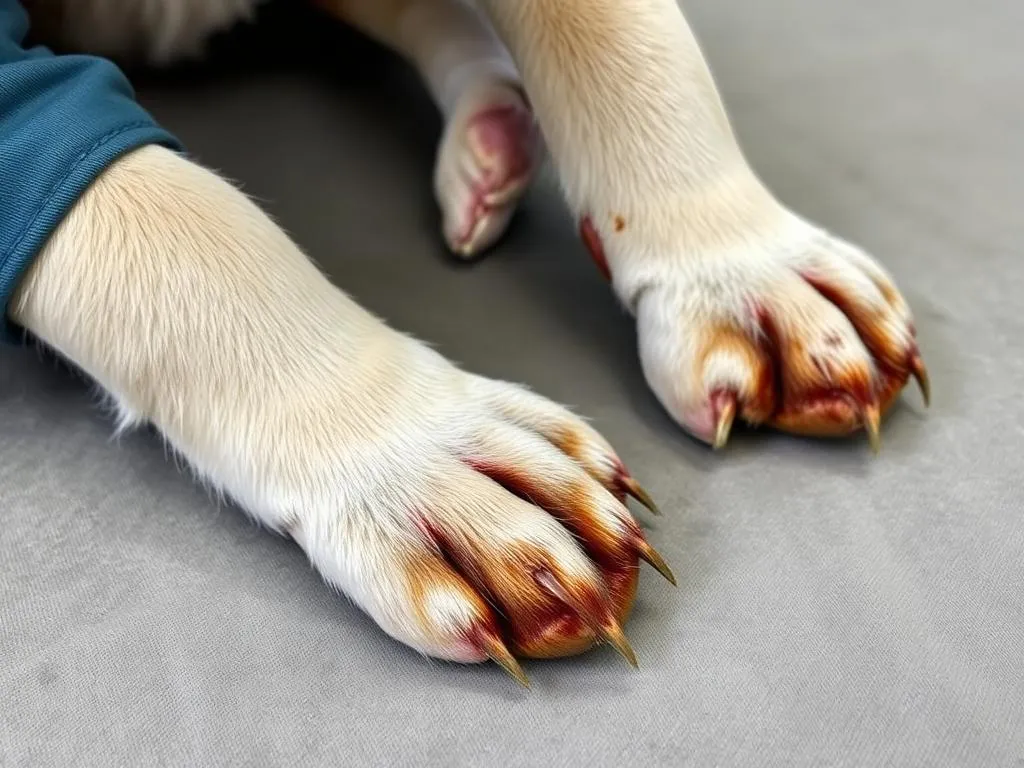
Introduction
When it comes to our furry friends, their paws are one of the most critical aspects of their mobility and overall health. Unfortunately, paw pads can easily become injured, especially when exposed to harsh environments or hazardous substances. Among the most common injuries are burns, which can be caused by hot surfaces, chemicals, or even fire. Knowing how to treat a burned dog paw pad is essential for every dog owner, especially when it comes to identifying when veterinary assistance may be necessary.
Understanding Dog Paw Pads
Anatomy of Dog Paw Pads
Dog paw pads are made of thick, tough skin that serves multiple purposes. They provide traction, absorb shock, and protect the bones and joints of the paw. The pads are composed of several layers, including the epidermis, dermis, and a fatty layer that cushions the foot. Well-cared-for paw pads are vital for your dog’s mobility, agility, and overall comfort.
Common Injuries to Paw Pads
Injuries to paw pads can take various forms, including:
- Cuts: Sharp objects, like glass or metal, can cause lacerations.
- Burns: High temperatures or chemical exposure can lead to burns.
- Abrations: Rough surfaces can wear down the pad’s protective layer.
Symptoms to look out for include limping, excessive licking of the paw, and visible damage to the pad itself. Recognizing these symptoms early can make a significant difference in the treatment process.
Causes of Burned Dog Paw Pads
Environmental Factors
One of the most common reasons for burned paw pads is exposure to hot surfaces, particularly during warmer months. Consider the following:
- Hot Pavement: Asphalt can reach scorching temperatures that can easily burn sensitive paw pads.
- Sand and Concrete: These surfaces can also become extremely hot and cause burns.
Additionally, chemical irritants, such as de-icers used in winter or certain lawn chemicals, can lead to burns and irritation.
Accidental Injuries
Burns can also occur due to accidental exposure to flames or hot objects. Other potential causes include:
- Hot Water: Spills or splashes can scald your dog’s paws.
- Fireworks or Flares: These can cause immediate burns if your dog gets too close.
Understanding these risks can help you take preventive measures to protect your dog’s paws.
Symptoms of a Burned Paw Pad
Recognizing the signs of a burned paw pad is crucial for prompt treatment.
- Visual Signs: Look for redness, swelling, blistering, or discoloration of the pad. Severe burns may even show signs of charred tissue.
- Behavioral Signs: If your dog is limping, excessively licking the affected paw, or showing reluctance to walk, these could be indicators of pain or discomfort.
If you notice any of these symptoms, it’s essential to take action quickly to ensure your dog’s well-being.
Immediate First Aid for Burned Paw Pads
Initial Assessment
Before treating a burned paw pad, assess the severity of the burn.
- Mild Burns: Characterized by redness and minor swelling. These can often be managed at home.
- Severe Burns: Signs include blistering, deep tissue damage, or severe swelling, which require immediate veterinary care.
Home First Aid Steps
If the burn appears mild, follow these steps for how to treat a burned dog paw pad at home:
-
Clean the Area: Use lukewarm water to gently clean the burned paw pad. Avoid using any harsh soaps or chemicals.
-
Apply a Cool Compress: Using a clean cloth soaked in cool water, apply it gently to the burned area for about 10-15 minutes. This can help reduce swelling and provide some relief.
-
Protect the Pad: If the burn is minor, you may cover it with a sterile bandage or bootie to protect it from further injury and dirt.
It’s important to monitor your dog during this time to ensure the area remains clean and doesn’t show signs of infection.
When to See a Veterinarian
Signs Indicating a Vet Visit is Necessary
While first aid can be effective for mild burns, certain signs indicate that a vet visit is essential:
- Severe Burns: If the burn appears deep (2nd or 3rd-degree) or has extensive blistering.
- Signs of Infection: Look for pus, excessive swelling, or fever.
- Persistent Pain: If your dog continues to show signs of pain or is unable to walk, seek veterinary assistance immediately.
What to Expect During a Vet Visit
During your visit, the veterinarian will typically conduct a visual examination of the paw pad. In some cases, they may perform imaging tests to assess the extent of the injury. Treatment options may include:
- Medications: Your vet may prescribe pain relief and antibiotics to prevent infection.
- Bandaging: Proper bandaging techniques will help protect the burn while it heals.
- Surgery (if necessary): In severe cases, surgical intervention may be required to remove dead tissue.
Being prepared for what to expect can help ease your mind and ensure your dog receives the best care possible.
Treatment Options for Burned Paw Pads
At-Home Treatment
If the vet recommends at-home care, consider the following:
- Recommended Ointments and Creams: Ask your vet about suitable topical treatments that can aid in healing and provide pain relief.
- Importance of Keeping the Area Clean and Dry: Regularly check the bandage and change it as needed to prevent infection.
Veterinary Treatments
For more severe cases, veterinary treatments may include:
- Prescription Medications: These can manage pain and prevent infection.
- Advanced Treatments: Options like laser therapy or hydrotherapy may be suggested for faster healing.
Always follow your veterinarian’s recommendations for the most effective treatment plan.
Recovery Process
Healing Timeline
The healing timeline can vary based on the severity of the burn:
- Mild Burns: These may take about 1-2 weeks to heal.
- Severe Burns: Healing can take several weeks, depending on the depth and extent of the injury.
Monitor your dog’s recovery closely, and consult your vet if you notice any setbacks.
Aftercare and Ongoing Management
Keeping your dog comfortable during recovery is essential. Here are some tips:
- Limit Activity: Encourage rest and avoid activities that could further irritate the paw.
- Use Protective Gear: Consider using protective booties or socks to shield the paw from irritants and promote healing.
Regular check-ins with your vet will ensure that your dog is on the right path to recovery.
Prevention Tips
Protecting Your Dog’s Paw Pads
To prevent burns in the future, consider the following:
- Best Times to Walk Your Dog: Avoid walking your dog during peak heat hours, typically between 10 AM and 4 PM.
- Use of Protective Gear: If your dog has sensitive paws, consider investing in booties for walks on hot surfaces.
Regular Paw Pad Care
Routine checks can help catch any injuries or irritations early:
- Routine Checks: Make it a habit to inspect your dog’s paws regularly for any signs of wear or injury.
- Moisturizing: Keeping the paw pads moisturized can prevent cracking and improve overall health.
Conclusion
Caring for your dog’s paw pads is essential for their health and mobility. Knowing how to treat a burned dog paw pad and when to seek veterinary assistance can make all the difference in the healing process. Early recognition of symptoms, prompt first aid, and appropriate veterinary care are vital steps in ensuring your furry friend recovers swiftly. If you have any specific concerns or questions, don’t hesitate to consult your veterinarian for personalized advice.









